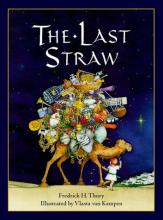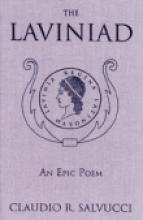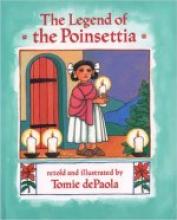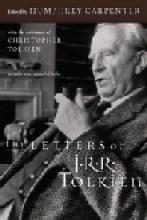No name
The Last Lecture
His last lecture can be viewed on YouTube: Randy Pausch The Last Lecture: Achieving Your Childhood Dreams.
In order to appeal to a wider audience, he avoids how his faith played a role in the development of his character.
The Last Straw
To celebrate Christmas, in addition to baking Christmas cookies, setting up the manger scene, decorating the tree, and numerous other seasonal activities, we also like to pause in out preparations to cozy up together and read good books that encapsulate the true meaning of Christmas. The Last Straw by Frederick H. Thury is one such book.
Hoshmakaka is a grumpy, old camel, who would rather do anything than carry gold, frankincense, and myrrh to Bethlehem. He is sleeping peacefully one night when he is visited by voices informing him that the wise men have chosen him for this task. He balks at the idea, providing feeble excuses, but when a furious wind blows the sand, he changes his mind.
The next day as the servants of the wise men are placing the precious gifts on his back a group of young, admiring camels comments that he must be very special. His pride puffed up, he brags that he is “as strong as ten horses” and then allows the young camels to accompany him along the journey. This could be his downfall. Will they find out the truth?
Along the way, one after another person or animal begs Hoshmakaka to carry a gift to the newborn king, creating a mountainous pile on his back. Finally, he comes within sight of Bethlehem. Feeling the strain of the weight, he doubts he will make it when a small voice asks him to carry one more gift for the baby.
Can he do it? Will he make it?
The pictures are delightful. My children enjoyed picking out the gifts piling up on his back. It has also become a familiar line in our home to say, “My joints, my gout, my sciatica.” And the ending is superb! All ages will enjoy this wonderful story.
The Laviniad
First the story: The author successfully writes in the style of the ancient epic in modern English, picking up the thread of the story of the Aeneid. The Laviniad takes up the tale of the Trojan settlement of Latium following the death of Aeneas. His son, Ascanius, assumes the leadership and almost immediatley must deal with the threat of Italians still hostile to the Trojan presence.
There are some pleasant similarities to the ancient epics, such as prophecies that are fulfilled in not quite the way the people expect, and the descriptions of the deaths of the heroes. The Trojans prevail in the end and Lavinia, Aeneas' widow gives birth to his child, the true and final mix of the blood of the Latins and the Trojans. Hope is restored to a people wearied by years of war and loss of life. Lovers of classic tales will really appreciate the poetry and the plot.
The poem reads easily and naturally with the flow and flavor of the ancient epics. A complete glossary in the back will help anyone who has not read the Aeneid or the Iliad to understand the relationship of the characters and the various names of the Greeks, Trojans, and Latins. It is not, strictly speaking, a sequel, however, a knowledge of the events of the Aeneid is helpful. A highschooler could appreciate the story whether or not he has read the Aeneid.
Now the book: I learned from the publisher that the author hand makes each book, binding and all! The story is printed on parchment and handsewn, not glued. The outer cover is a light blue cloth cover. It is a beautiful, elegant edition, wonderful for gift giving.
Binding details: Hardback with cloth covering
The Legend of Odysseus
The Legend of the Poinsettia
Feeling more courageous, Lucida picks a bundle of weeds and brings them to the Baby Jesus in the manger scene at church, where they are beautifully transformed.
The Lemon Sisters
The Letters of J.R.R. Tolkien
In explaining these things, much is revealed about his understanding of the world (both philosophically and theologically). Reading the Hobbit and the Lord of the Rings, he, in one letter, describes as a "keyhole" view of his subcreation, Middle Earth. This in itself is revealing. It seems to have been very time consuming and difficult for Tolkien to produce his works. Through the letters, you begin to see that this is partly due to the fact that he was a perfectionist. He would let you see something through the keyhole (eg. a fairly brief mention of the story Luthien Tinuviel looked upon as an historical event) but wasn't really satisfied until he tackled the complete story of Luthien as well. He must have had an enormous amount of material in his study and in his head! He indicates that there are only two things in the Lord of the Rings that he does NOT know about - one being "the cats of Queen Beruthiel". ... the point being that he DOES know about the rest in great detail. He has firm ideas about the creation and descent of the elves, the work and character of the Valar/Angels, the history of the landscape, the fables associated with the morning star, Earindel. And nothing gets more attention than the languages used. He made them up for fun - it was a true love of his. He knows where they started, how they mingled with others down through Middle Earth's history, their forms, changes and pronunciations.
But I lost my thread. His philosophy and theology are very evident in his works of fiction - they make the world of Middle Earth seem real BECAUSE they are so well grounded. They blossom in these letters. He can stand back from the events and tell an inquisitor WHY something in Middle Earth happened - and that is very edifying. His perfectionism has driven him to understand our own world well enough to figure out what is really possible in Middle Earth. He makes the critical distinction between what is accidental and what is essential so that Middle Earth may diverge from our own place in space and time yet still appear REAL.
As an example, he responds to a priest who challenges Tolkien's ideas about elves - elves are undying in Middle Earth. Tolkien explains the notion that this is not an essential problem with God's creative abilities - even if it seems impossible that we would see it ourselves. You have to read his explanation - the whole point being that he DID think about it and had reasons for it even before he put it in the books.
It is gratifying, as a Catholic, to learn that Tolkien's good philosophy and theology are heartily Catholic in nature. And to learn that his greatest inspiration, comfort and love was the Eucharist!
It is interesting to read that one letter of fatherly advice to his son about love and marraige. This is one area where he makes so much sense you want to cheer. It is not mushy sentimentalism and it is not clinical psychology. It is the very human assesment of the how fallen-nature and super-nature manifest themselves in finding and keeping a spouse. And as such it is darned good advice for anyone!
You will also learn a lot about Tolkien in this book. And even though he is not perfect - there is so much to learn. There are areas in which you want to emulate him. And areas in which you may find him shy of the mark. You can do your own philosophizing about where to draw that line - and his manner and style - so humble - INVITES you to reflect like this. This book is like a life experience. His life is, after all, another life. It is good and not so good and filled with the decisions that help make us who we are.
also includes extensive notes and index
The Librarian Who Measured the Earth
We enjoyed this book very much - the content is great and the illustrations are very nice. It would make a fine supplement for Greek History and encompasses a bit of Math and Science as well. The reading level is more challenging than your average picture book (perhaps 4th grade level) but it could be read aloud to younger children.
The Library Of Alexandria
My fourth grader and Classics-minded daughter loved this one! The product description does a good job of explaining what the book is all about:
The Library of Alexandria was the largest library of its time and a major center for learning and scholarly research, particularly in the fields of astronomy, geography, mathematics, and medicine. Caesar and Cleopatra, Erastosthenes and Euclid, Archimedes and Alexander the Great are just a few of the famous people connected to its story. Today, historians still argue about how the library was destroyed, and no one knows exactly what it looked like, yet there is no question that the library continues to fascinate and intrigue us. This extensively researched look at what we do know about the Library of Alexandria features Kelly Trumble"s short, accessible chapters, and richly detailed full-color paintings by Robina MacIntyre Marshall. Together, they tell the story of one of the wonders of the ancient world, and show how its influence as continued long after its destruction. Glossary, suggested reading, selected bibliography, index.









